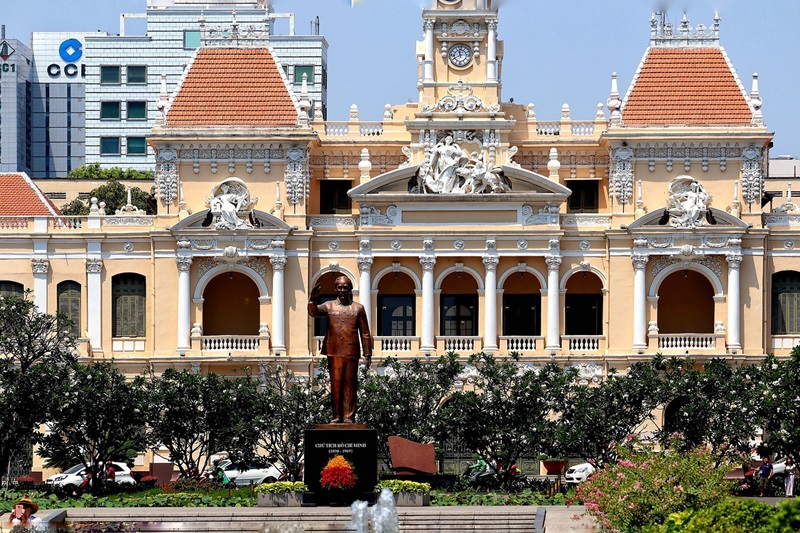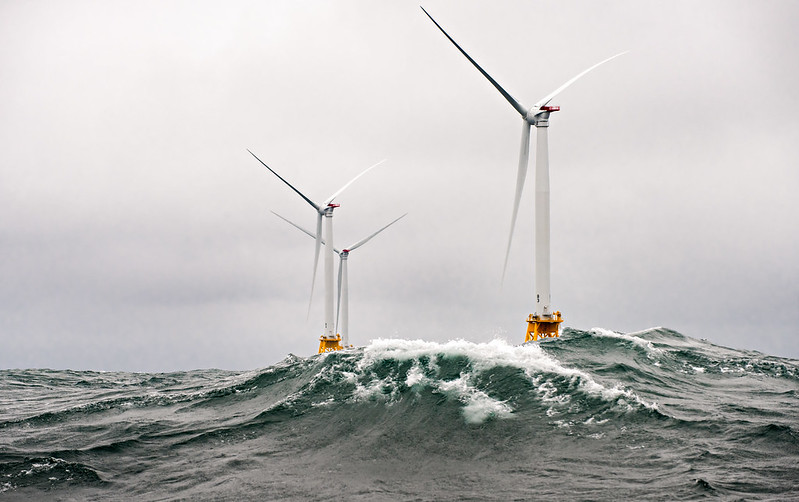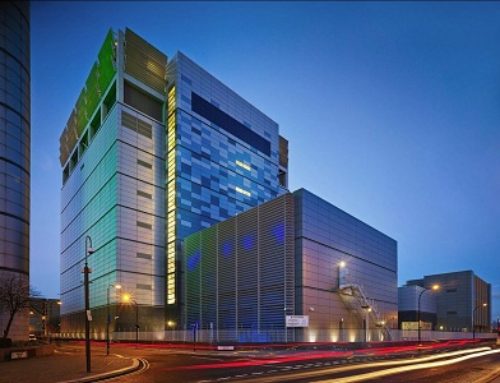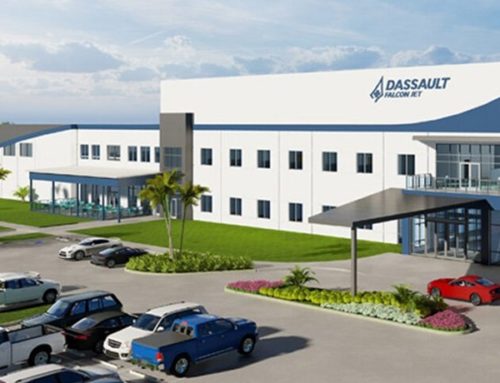1. Copenhagen Infrastructure Partners Launches Major Offshore Wind Projects in Australia
OffShore Wind National Renewable Energy Lab CC BY-NC-ND 2.0 https://creativecommons.org/licenses/by-nc-nd/2.0/
Copenhagen Infrastructure Partners (CIP), a global leader in renewable energy investments, has recently secured two offshore wind feasibility licenses in Australia, marking a significant milestone in the country’s renewable energy landscape. These projects, covering nearly 1,300 km² of seabed, have the potential to deliver up to 4.4 GW of capacity, enough to power approximately 2.4 million homes.
To spearhead these initiatives, CIP has launched a new platform company, Southerly Ten, dedicated to the development and delivery of offshore wind projects in Australia. This move underscores CIP’s commitment to establishing a robust offshore wind industry in the region, contributing to Australia’s green energy transition while creating economic and job opportunities.
Star of the South: Pioneering Australia’s Offshore Wind Industry
One of the flagship projects under Southerly Ten is the Star of the South, Australia’s first offshore wind project. Located off the south coast of Gippsland in Victoria, this 2,000 MW project is poised to supply around 18% of the state’s electricity needs. The project is currently in the development phase, with ongoing site investigations and environmental assessments.
Kut-Wut Brataualung: Expanding Offshore Wind Capacity
In addition to the Star of the South, CIP is also developing the Kut-Wut Brataualung project, further expanding Australia’s offshore wind capacity. These projects are expected to provide a reliable and consistent source of energy, enhancing the diversity and security of the state’s grid and protecting against blackouts during peak demand periods.
A Commitment to Sustainability and Community Engagement
CIP’s approach to these projects emphasizes sustainability and community engagement. The company has been working closely with local communities, government, and industry stakeholders to ensure the successful development of these offshore wind farms. This collaborative effort aims to unlock the energy, climate, and economic benefits of offshore wind for Australia.
Looking Ahead
With the establishment of Southerly Ten and the advancement of the Star of the South and Kut-Wut Brataualung projects, CIP is set to play a pivotal role in Australia’s renewable energy future. These initiatives not only represent a significant step towards a sustainable energy transition but also highlight the potential for offshore wind to become a cornerstone of Australia’s energy landscape.
2. AirTrunk Opens Data Centre in Malaysia, Accelerating Innovation and Sustainability

Umaraffan via pexels
Johor Bahru, Malaysia – AirTrunk, a leading hyperscale data centre specialist in the Asia Pacific and Japan (APJ) region, has officially launched its flagship Malaysian data centre, AirTrunk JHB1. This state-of-the-art facility, located in Johor Bahru, marks a significant milestone in the region’s digital infrastructure landscape.
A Major Milestone
The AirTrunk JHB1 data centre boasts an impressive 150 megawatt (MW) capacity, with its initial phases providing over 50MW to cater to large technology customers. Spanning over 10.3 hectares, JHB1 is strategically positioned at the southern tip of the Malay Peninsula, offering robust domestic and international connectivity, including a seamless cross-border connection to Singapore.
Cutting-Edge Technology and Sustainability
Designed with an industry-leading Power Usage Effectiveness (PUE) of 1.15, JHB1 is one of the most efficient data centres in Malaysia. The facility features an AI-ready design, incorporating AirTrunk’s pioneering direct-to-chip liquid cooling technology alongside traditional indirect evaporative cooling (IEC) and high-density racks. This innovative approach reduces energy consumption by up to 23%, underscoring AirTrunk’s commitment to sustainability.
Collaborative Efforts and Future Prospects
The development of JHB1 was completed in over 4 million work hours without any major safety incidents, highlighting AirTrunk’s dedication to safety. The project saw collaboration with Malaysian utility company Tenaga Nasional Berhad (TNB) to ensure energy reliability and support the region’s energy transition. Earlier this year, AirTrunk announced a 30MW renewable energy Virtual Power Purchase Agreement with developer ib vogt under Malaysia’s Corporate Green Power Programme.
Official Opening Ceremony
The grand opening ceremony of JHB1 was attended by distinguished guests, including Malaysian and Australian government officials, and key AirTrunk partners. Notable attendees included Malaysia’s Deputy Minister for the Ministry of Investment, Trade and Industry, YB Tuan Liew Chin Tong, and Australia’s High Commissioner to Malaysia, Her Excellency Ms Danielle Heinecke.
Conclusion
AirTrunk’s entry into Malaysia with the JHB1 data centre not only underscores the country’s growing importance as a regional digital hub but also aligns with Malaysia’s vision of fostering a robust and innovative digital economy. With its cutting-edge technology and commitment to sustainability, AirTrunk is set to play a pivotal role in the region’s digital transformation.
3. Collins Aerospace Relocates to New Manufacturing Plant in Singapore

Singapore, August 2024 – Collins Aerospace, a leading name in the aerospace industry, has announced plans to relocate its manufacturing operations to a new state-of-the-art facility in Seletar Aerospace Park, Singapore. This move represents a significant investment of $250 million (S$336 million) and underscores the company’s commitment to innovation and excellence in the aerospace sector.
The new facility, set to begin construction in the fourth quarter of 2025, is expected to be completed by 2027, with production commencing in 2028. This strategic relocation will see Collins Aerospace transfer its operations from the current Bedok site to the new Seletar location, approximately 24 kilometers away.
Enhancing Production Capabilities
The Seletar Aerospace Park is home to over 70 aviation industry players, including GE Aviation and Bombardier. Collins Aerospace’s new facility will leverage cutting-edge technology to support the design, development, and production of advanced aerospace components. This move is expected to significantly boost the company’s production capabilities and enhance its ability to meet the growing demands of the aerospace industry.
Henry Brooks, President of Power & Controls at Collins Aerospace, stated, “This new facility will be a hub of innovation, leveraging cutting-edge technology to support aerospace components’ design, development, and production. Our investment in Seletar Aerospace Park underscores our long-term commitment to Singapore and to providing our customers with the highest quality products and services”.
A Seamless Transition
During the multi-year transition plan, Collins Aerospace will maintain dual production capabilities at both the Bedok and Seletar sites to ensure a seamless transfer of operations. Employees currently based at Bedok will play an integral role in the transition and future operations at the new facility, ensuring continuity and leveraging their extensive expertise.
Cindy Koh, Executive Vice President of the Singapore Economic Development Board, commented, “The significant investment by Collins Aerospace is a testament to Singapore’s strengths as a location for advanced manufacturing. We are partnering with leading aerospace companies on their long-term growth, and we look forward to the new manufacturing capabilities and technologies that will be introduced in this facility”.
A Legacy of Excellence
Collins Aerospace has a rich history in Singapore, having established its presence nearly five decades ago in 1975. The Bedok site has built strong relationships as a supplier to key airframers, including Airbus, Boeing, Bombardier, Embraer, and Gulfstream. The new facility at Seletar Aerospace Park will continue this legacy of excellence, supporting the company’s mission to deliver high-quality aerospace products and services.
4. Toyota Kirloskar Motor to Establish New Manufacturing Plant in Maharashtra

In a significant move to bolster its manufacturing capabilities in India, Toyota Kirloskar Motor (TKM) has signed a Memorandum of Understanding (MoU) with the Government of Maharashtra. This agreement marks the beginning of a new chapter for TKM, as it explores the establishment of a Greenfield Manufacturing Facility at Chhatrapati Sambhaji Nagar.
Investment and Economic Impact
The proposed investment for this new facility is approximately ₹20,000 crore. This substantial investment underscores Toyota’s commitment to expanding its footprint in India and aligns with the company’s core values of “Grow India – Grow with India”. The new plant is expected to create significant job opportunities and contribute to the economic growth of the region.
Focus on Advanced Technologies
The new facility will focus on producing electric and hybrid vehicles, reflecting Toyota’s dedication to sustainable and advanced automotive technologies. With an annual production capacity of 400,000 cars, the plant aims to meet the growing demand for eco-friendly vehicles in both domestic and international markets.
Strategic Location and Support
Chhatrapati Sambhaji Nagar, chosen for its strategic location, will provide TKM with the necessary infrastructure and resources to support its manufacturing operations. The support from the Maharashtra government has been instrumental in facilitating this project, highlighting the state’s commitment to fostering industrial growth.
A Milestone for Toyota in India
Since commencing operations in India in 1999, Toyota has established itself as a leader in innovation and manufacturing excellence. The new plant in Maharashtra will further strengthen Toyota’s position in the Indian automotive industry and contribute to the country’s vision of becoming a global manufacturing hub.
Conclusion
The establishment of this new manufacturing facility is a testament to Toyota’s long-term vision for India. By investing in advanced technologies and creating job opportunities, Toyota Kirloskar Motor is poised to play a pivotal role in the economic and industrial development of Maharashtra.
5. The Surge of Taiwanese Investments in Vietnam: A New Era of Economic Collaboration

In recent years, Vietnam has emerged as a prime destination for Taiwanese investments, marking a significant shift in the economic landscape of Southeast Asia. This trend has been driven by a combination of strategic economic policies, robust trade relations, and the mutual benefits of technological collaboration.
A Booming Investment Landscape
In 2023 alone, Taiwanese investments in Vietnam surged fourfold, reaching an impressive USD 2.2 billion. This remarkable growth has positioned Taiwan as the fourth-largest investor in Vietnam, with nearly 3,200 projects and a total registered capital exceeding USD 39.5 billion. The influx of capital has been particularly notable in the high-tech sector, where Taiwanese expertise in technology and electronics has found a fertile ground for expansion.
Key Drivers of Investment
Several factors have contributed to this influx of Taiwanese investments. Firstly, Vietnam’s strategic location and favorable investment policies have made it an attractive destination for Taiwanese businesses looking to diversify their operations and mitigate risks. Additionally, the strong economic ties between the two countries have been bolstered by regular business forums and collaborative ventures, such as the Vietnam-Taiwan Business Forum.
Technological Advancements and Industrial Growth
Major Taiwanese corporations like Foxconn, Wistron, and Quanta have spearheaded investments across various sectors, including electronics, textiles, and footwear. These investments have not only infused capital into Vietnam’s economy but also facilitated technology transfer, localization efforts, and the cultivation of skilled labor. This has significantly bolstered Vietnam’s industrial landscape, making it a hub for high-tech manufacturing and innovation.
Future Prospects and Collaborative Ventures
Looking ahead, the prospects for Taiwanese investments in Vietnam remain bright. The Vietnamese government has expressed a keen interest in furthering collaboration in the semiconductor sector, recognizing Taiwan’s prowess in this field. With Vietnam’s aspirations to integrate into global supply chains and bolster its semiconductor industry, there is a strong alignment between Vietnamese policies and Taiwanese strengths.
At the recent Vietnam-Taiwan Business Forum, industry leaders emphasized the resilience of economic ties amidst global challenges and reiterated their commitment to expanding their footprint in Vietnam. This sentiment was echoed by Mr. Pham Tan Cong, Chairman of the Vietnam Chamber of Commerce and Industry, who highlighted Taiwan’s pivotal role as a crucial investor in Vietnam’s growth story.
Conclusion
The influx of Taiwanese investments in Vietnam marks a new era of economic collaboration between the two nations. As both countries continue to leverage their strengths and foster deeper economic ties, the future looks promising for this dynamic partnership. With continued investments and technological advancements, Vietnam is well on its way to becoming a key player in the global economic arena.
Featured image OffShore Wind National Renewable Energy Lab CC BY-NC-ND 2.0 https://creativecommons.org/licenses/by-nc-nd/2.0/







